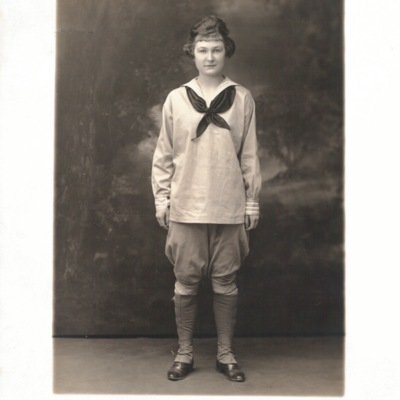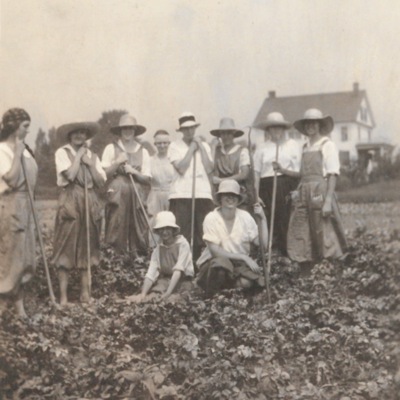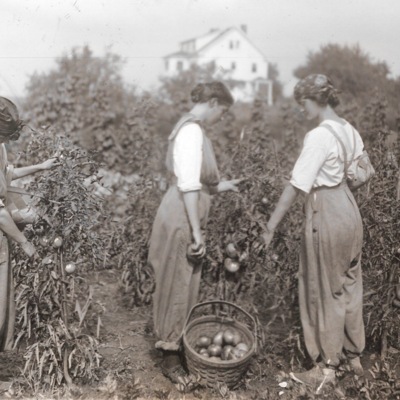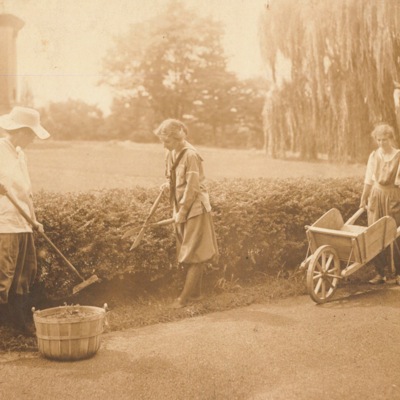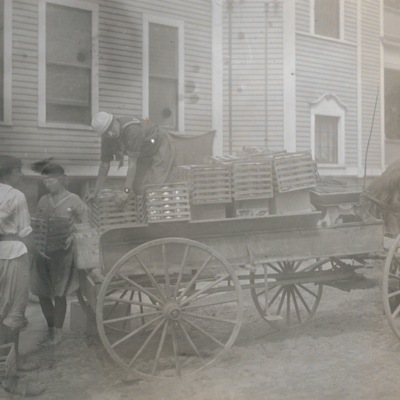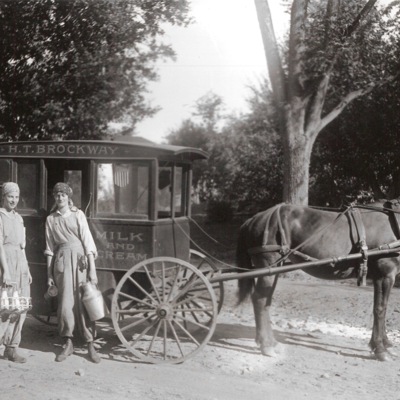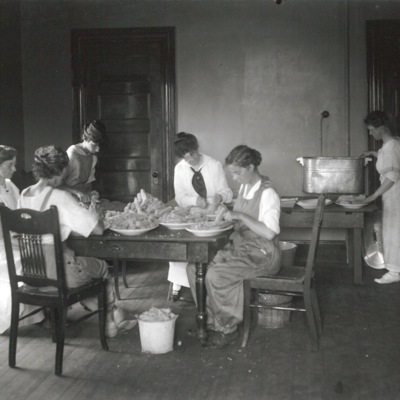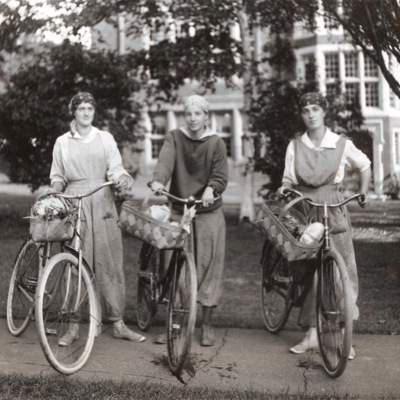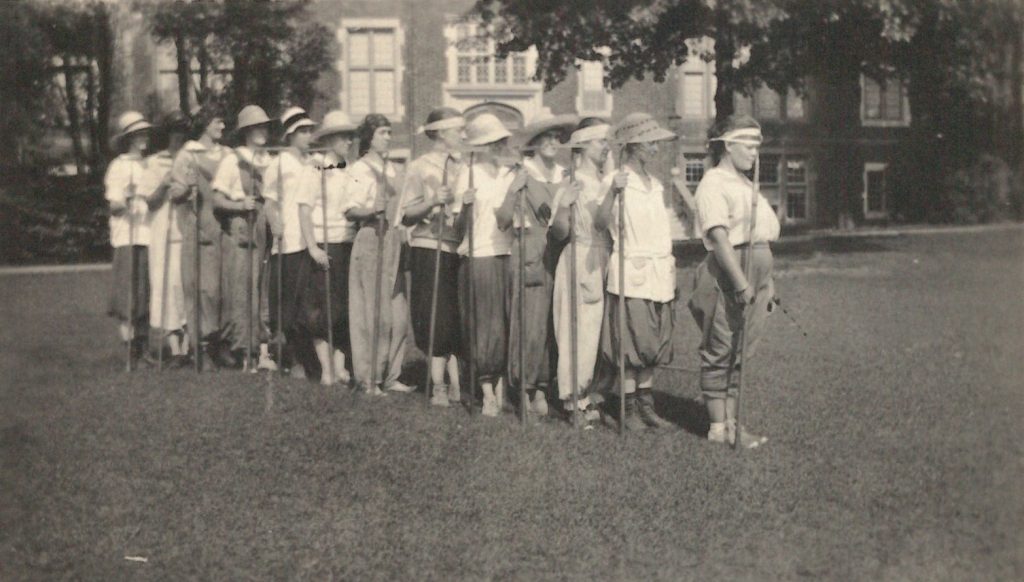In the spring of 1917, soon after America entered the War, students from Mount Holyoke College created a college farm with the goal of contributing to the war effort. After choosing a seven-acre plot, they contracted South Hadley farmers to plow and prepare the land and recruited students and faculty to plant and cultivate the crops. The students who worked on the farm were called Farmerettes. Although some doubted that they would be able to succeed in the endeavor, they soon proved equal to the task.
“Can anyone possibly visualize young women accustomed to stroll in white gowns and shoes…cutting potatoes or going to the fields with hoes over their shoulders?” -A College Official, July 1917
A Proper Uniform
Like the soldiers fighting in Europe, Mount Holyoke Farmerettes were required to wear a uniform. This uniform included putnees (loose trousers) that were either khaki or blue in color, a matching blouse, comfortable, low-heeled shoes or sneakers, and stockings. They also designed an emblem which was worn on their costumes. These emblems were decorated with red stripes that indicated the number of months each girl had worked on the farm. According to one student, they also wore straw hats of “umbrella proportions” to protect themselves from the sun.
The Farmerettes enjoyed wearing their uniforms to local events, especially since it allowed them to shock town residents with the idea that women could not only farm, but that they could do so wearing men’s clothing.
A Farmerette’s Day
The Farmerettes who worked during the summer months woke at 5:00 AM and, after changing into their uniform and eating a hearty breakfast, began work on the college farm. Students typically worked on the farm for six hours, leaving the afternoon free for other tasks.
Helping on the Homefront
“The purpose was…not to make money, but to produce food as a small but material contribution to the resources of our allies in arms.” -Mount Holyoke Alumnae Quarterly, July 1917
Beyond the Farm
When they were not working on the Mount Holyoke College Farm, many farmerettes volunteered on local farms while others maintained lawns and gardens for South Hadley residents.
From Farm to Table
Among the crops that were grown on the garden were beans, beets, cabbage, carrots, cauliflower, celery, cucumbers, lettuce, peas, potatoes, radishes, squash, corn, tomatoes, and turnips. In 1918, the college installed a canning kitchen and students worked to preserve vegetables for use during the winter.
The War’s End
Although some doubted that College women would be able to complete such an ambitious project, their endeavor was a success. By the end of the summer of 1917, they were able to pay back the money invested in the farm. After the War ended in November of 1919, the farm was reduced to a size that could be handled with a minimum amount of labor.
